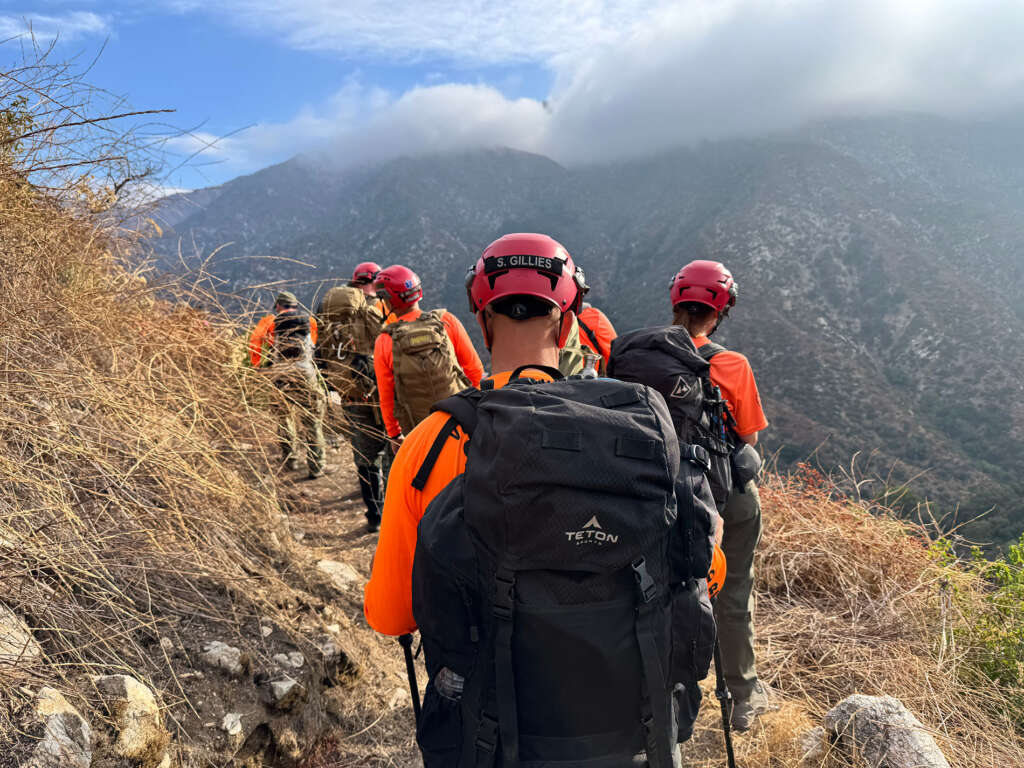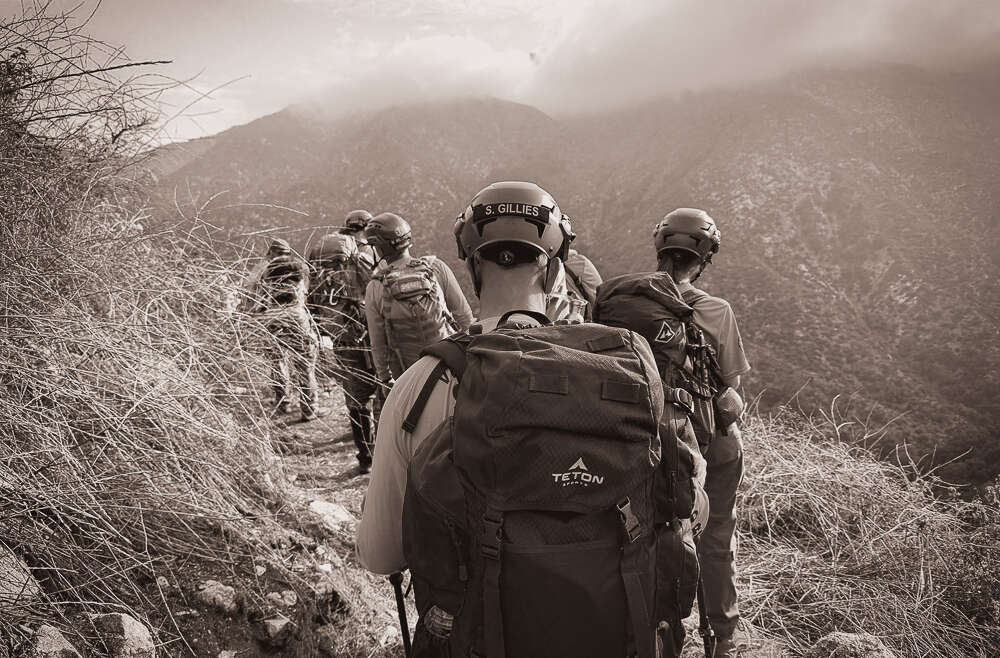Fillmore SAR uses many tools to find and rescue those in need, but the most reliable method requires human beings to hike with various gear loads.
- Seasonal variations require backpack loads of 25 to 60 lbs or more
- Helicopter dropoff does not guarantee helicopter pickup
- SAR members must be prepared for overnight camping
A Wide Range of Loadouts
Individual backpack (and chest rig) loadouts can vary quite widely, depending on the situation, weather, potential overnights, etc. A light load might be less than 20 lbs; whereas heavier loadouts might require us to haul more than 60 lbs of gear.
Example Loadout
A lot of gear, such as water, food, personal rope, and harness, is standard. A SAR team member may also have to carry team equipment such as additional ropes, anchors, systems gear, and communications. Here is one of many typical loadouts for a winter callout:
- Chest rig with phone, lights (white and red light options), snack food, wipes, notepad, satcoms device, gloves, glow stick, shears, whistle, paracord, sunscreen, Sheriff hat, ID, flagging tape, compass, fire kite
- 2.5 – 3 L of water, food for 24 hours, stove and gas
- Clothing: upper and lower base layers, additional wool socks, hats and cold weather gloves, neck and head coverings, goggles, helmet, vests and coat, rain gear, gaiters, riggers belt, boots
- Sleep system including bag, bivvy or tent, ground pad
- Tracking sticks, tape measure
- Hygiene kit (toothpaste and brush; poison oak wipes; baby wipes, zip lock bags)
- Climbing gear (harness, carabiners, 100 ft 9mm rope, rescue 8 plate, various prusiks and devices)


